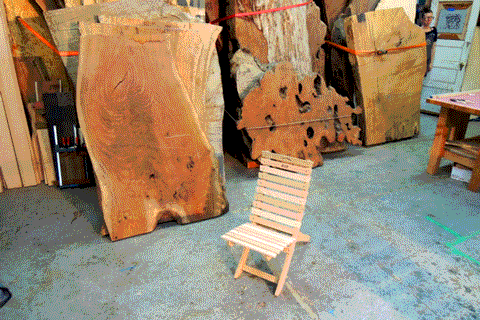Michele has been hard at work developing a brand new product for the OWS Store. We’re pleased to announce that it has just launched, and is affectionately known as the Ramblin’ Rump-Stump. It’s a collapsible camp chair that is lightweight, rugged, and a lean, mean reclining machine:
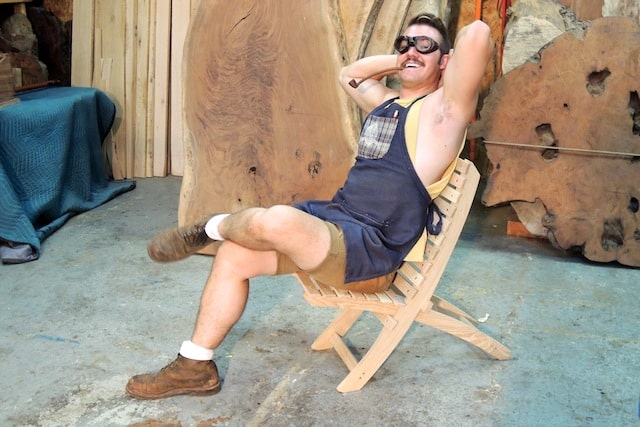
In light of this new addition to the inventory, we thought we’d furnish you all with some background ballyhoo on its origins, and our design/build process.
To the best of our knowledge, the original inventor of this particular chair is unknown (if you know who, do tell!). The most rudimentary form of the chair looks like this:
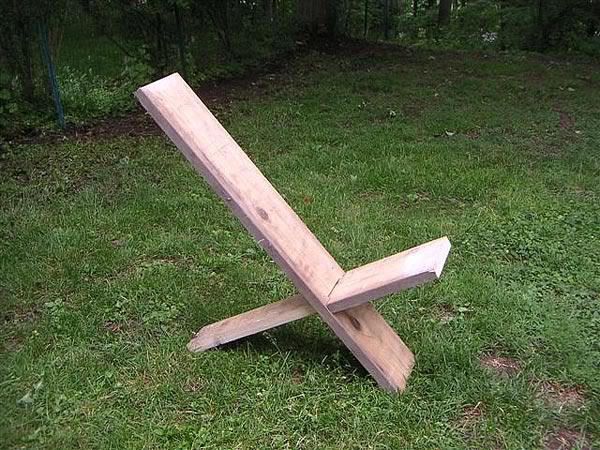
Wherein the seat and backrest are separate pieces, but they wedge together and form a tension-joint of sorts when “under-rump”. The design emerges into more common usage during the American Civil War era. This image example shows the soldier on the right sitting on a chair that is very similar in design.
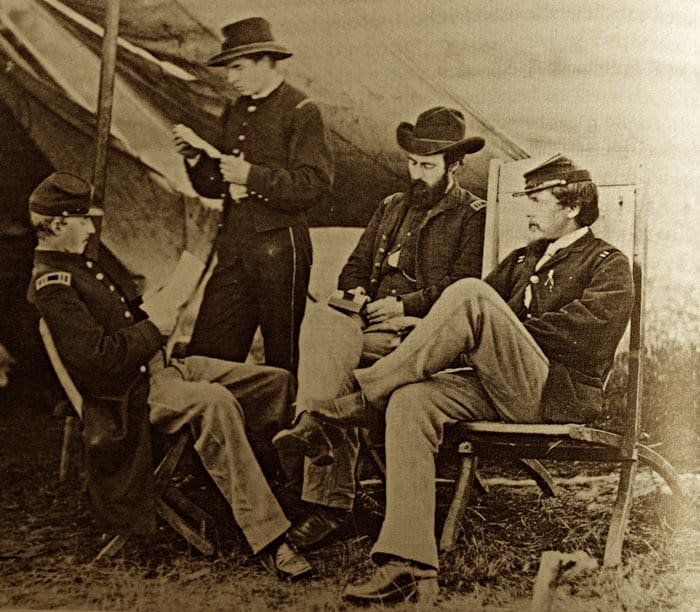
By this stage, the chair has been rendered into a more lightweight form by diverting away from the solid-plank approach and into a design based on screws and slats. Around this time, Lord Baden Powell and his cohort of young outdoor enthusiasts adopted the design, and to this day it is often referred to as a Boy Scout Camp Chair.
Michele sourced a range of different drawings and began working on some mock-ups (for more info on mock-ups go here). The first step was to build something out of basic materials (cardboard and tape in this instance) to test the overall dimensions and angle of repose. Clamps sure do come in handy for this kinda stuff…

Next steps involved building the basic form out of Poplar. Tests were conducted to gauge the possibility of deploying a hand woven Danish Cording approach to the seat. While this did indeed make for a rambunctious rump-slumping experience, it was very time consuming and would have made the chair (as a product) improbably expensive.
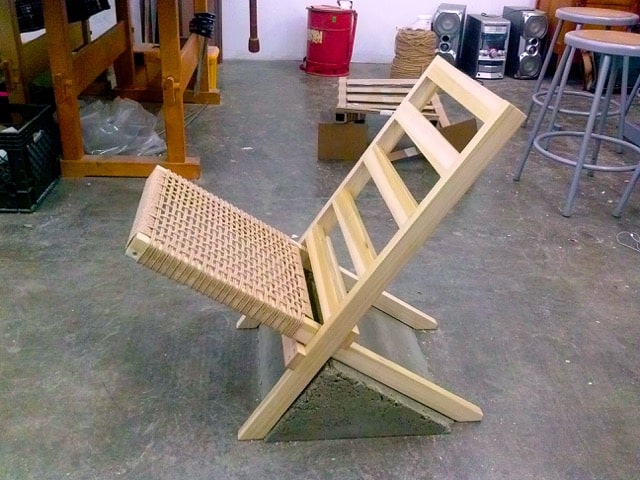
While the flat approach to the design (above) occupies the least amount of space for storage and transportation, consensus was reached that adding some slight curves to the design would be a little easier on the eye, while only slightly minimizing it’s storage economy. The first rendition of a curvy Rump-Stump lies below.
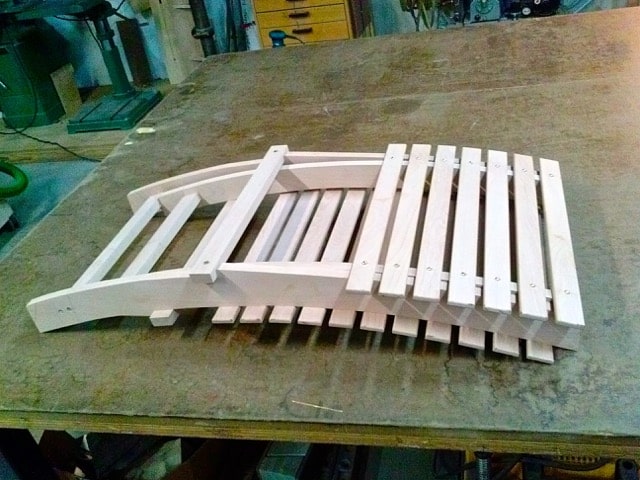
After testing out its dimensions we found that the recline-design was markedly improved, but some dimensions needed a little adjustment. Subsequent steps involved:
- Adjusting the curve to further improve the angle of recline.
- Reducing the width.
- Increasing the height of the back, while reducing the slat-count of the back by one.
By this stage Michele had what felt like a great design. Light and compact without compromising comfort and style. The last design modification involved applying a 10 degree cut to the edge of the slats to imply a little more movement and dynamism to the form.
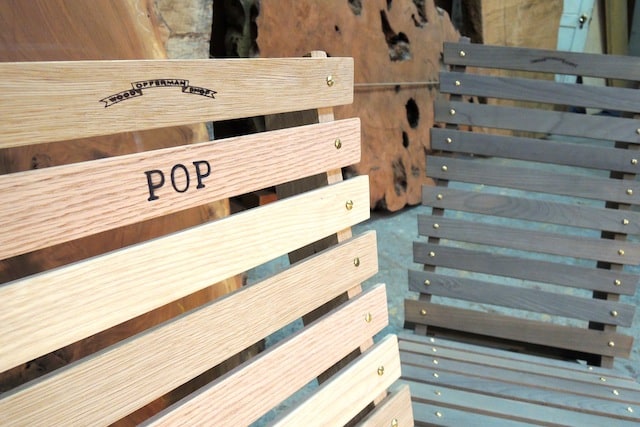
The last decisions were what to build it from, and how to finish it. Michele wanted to work with an unfinished version that would age gracefully over the years. This ended up being the Pickled European Beech variation. The final decision on the Natural Variation was to combine several different woods for the slats to make the natural timbers sing in a chorus of color. The first contenders were Cedar, Redwood and Cypress, but after consultation with Nick it was agreed that these woods would not withstand the elements well enough. In the end, the selection of White Oak, Red Oak and Ash provided a beautiful range of hues while maintaining maximum durability and longevity for outdoor conditions.
This kind of chair is a really great project for the woodworking enthusiast. For those who are interested in building your own here are some plans for a boyscout version, and there is also a neat instructional page on the fabulous Instructables site.
Finally, here is an animation of Michele demonstrating the ease of setup and portability.
